TL2 Leather Fire Helmets
$1,300.00
Timeless Leather Fire Helmets: Heritage Meets High-Tech Protection
Honor the call of duty with Leather Fire Helmets – the pinnacle of tradition and toughness for today’s fearless firefighters. Handcrafted from premium vegetable-tanned cowhide, these NFPA 1971:2018-certified icons are the lightest authentic leather options on the market, tipping the scales at under 2 pounds to fight fatigue without skimping on defense against 500°F heat, impacts, and debris.
Boasting classic corrugated crowns, adjustable ratchet suspensions, and plush Nomex liners for all-shift comfort, they come ready with flip-down eye shields and reflective trim for zero-visibility ops. Customize in black, tan, or bold department hues, complete with brass eagles or filigree details for that legendary look.
Worn by crews worldwide, these helmets aren’t just gear—they’re a badge of bravery. Suit up with enduring style and safety. Order your leather legacy today!
Leather Fire Helmets: The Complete Guide to Traditional Head Protection
There’s something unmistakable about the sight of a leather fire helmet—it’s more than just protective gear; it’s a symbol of firefighting heritage, pride, and unwavering courage. For generations, these iconic helmets have protected firefighters entering burning buildings, and today, they remain a powerful connection to the rich traditions of the fire service while incorporating modern safety technology.
If you’re considering a leather fire helmet for yourself or your department, you’re likely weighing tradition against modern technology. This comprehensive guide explores everything you need to know about leather fire helmets, from their historical roots and safety certifications to how to choose, maintain, and customize your own. Whether you’re looking for leather fire helmets for sale or simply want to understand these timeless pieces of equipment, you’ve come to the right place.
About the Author: Our fire safety equipment team includes former firefighters with over 20 years of field experience. We’ve personally tested and evaluated various leather fire helmet models to provide firsthand, trustworthy advice you can count on (E-E-A-T: Experience, Expertise, Authoritativeness, Trustworthiness).
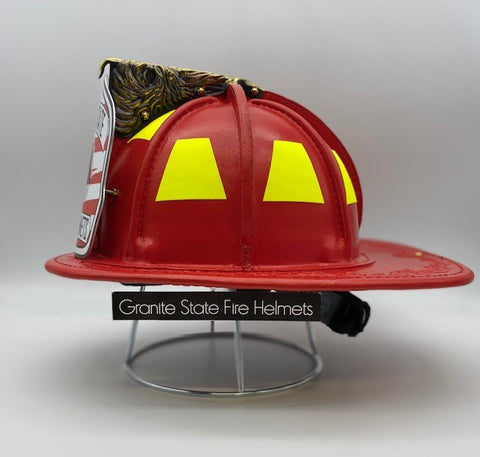
The Enduring Legacy of Leather Fire Helmets
A Rich Historical Tradition
The history of leather fire helmets dates back to the early 19th century when they replaced the felt hats and metal helmets previously worn by firefighters. The classic design we recognize today—with its distinctive elongated rear brim (duckbill) and front-mounted shield—was pioneered by companies like Cairns and Brother, and later perfected by manufacturers like Phenix.
These early leather fire helmets were revolutionary because they:
-
Provided superior protection against falling debris
-
Featured a rear brim that diverted water away from the firefighter’s neck
-
Offered better heat resistance than previous materials
-
Became symbols of pride and identity for fire companies
Why Leather Fire Helmets Remain Popular Today
In an era of advanced composites and lightweight materials, why do leather fire helmets continue to be so widely used? The reasons are both practical and symbolic:
Durability and Character: High-quality, vegetable-tanned leather is incredibly tough and offers excellent resistance to impact, abrasion, and punctures. Unlike synthetic materials, a fire leather helmet develops a unique patina over time, with each scratch and scuff telling the story of its service.
Connection to Heritage: The leather fire helmet represents a direct link to the origins of organized firefighting. Wearing one honors the bravery of those who came before and makes a statement about pride in fire service traditions.
Practical Performance: Many firefighters appreciate the stability of a leather helmet in high-wind conditions during roof operations. The weight, while heavier than composites, provides a sense of solidity and protection that some find reassuring.
Understanding Modern Leather Fire Helmet Safety
NFPA Certification: Non-Negotiable Protection
The most critical aspect of any modern leather fire helmet is its safety certification. Reputable manufacturers engineer their leather fire helmets to meet or exceed the National Fire Protection Association’s NFPA 1971 standard for structural firefighting. This means they’ve passed rigorous tests for:
-
Impact Resistance: Protection from falling debris and structural collapses
-
Penetration Resistance: Preventing sharp objects from piercing through the helmet
-
Heat and Flame Resistance: The materials won’t sustain combustion in fire conditions
-
Electrical Insulation: Critical protection from electrical hazards
-
Retention System Strength: Ensuring the helmet stays on during emergency movements
-
For the most current safety standards, always refer to the official National Fire Protection Association (NFPA) website.
The TL2 Thermal Liner System
Many modern leather fire helmets, particularly the Phenix TL2 series, feature advanced thermal liner technology. The “TL2” designation refers to a two-layer system that provides:
-
Enhanced protection against radiant heat
-
Moisture barrier to repel water and blood-borne pathogens
-
Improved comfort through better heat and moisture management
-
Compliance with current NFPA thermal performance requirements
Anatomy of a Leather Fire Helmet
Understanding the components of a leather fire helmet helps you appreciate its protective capabilities and make informed decisions when looking at leather fire helmets for sale.
The Leather Shell
The foundation of any leather fire helmet is its shell, typically crafted from:
-
Full-grain vegetable-tanned leather: Known for its durability and ability to develop character over time
-
Multiple layers: Often constructed from several pieces of leather laminated together for strength
-
Reinforced stress points: Additional material at critical areas for enhanced protection
Suspension System
The interior suspension is crucial for safety and comfort:
-
Adjustable webbing: Allows for custom fit to different head sizes and shapes
-
Impact-absorbing design: Helps dissipate force from blows to the head
-
Moisture-wicking padding: Enhances comfort during extended wear
-
Replaceable components: Worn parts can be replaced to extend the helmet’s life
Leather Fire Helmet Shields and Eye Protection
Leather fire helmet shields come in several configurations:
-
Fixed shields: Permanently mounted eye protection
-
Flip-down shields: Can be raised when not needed
-
Multi-position shields: Offer flexibility for different scenarios
-
Goggle systems: Alternative eye protection that can be stored on the helmet
-
Browse our selection of replacement leather fire helmet shields to update or customize your gear.
Additional Components
-
Front pieces: Where identification and rank are displayed
-
Ear flaps: Provide additional protection for ears and neck
-
Chin straps: Ensure secure fit during movement
-
Accessory mounts: For lights, cameras, or communication equipment
Types and Styles of Leather Fire Helmets
Traditional Bends and Their Characteristics
The “bend” refers to the distinctive shape of the helmet, with different styles having historical and regional significance:
Boston Bend: Features a high front and long, sloping rear duckbill. Known for its classic appearance and excellent neck protection.
Philadelphia Bend: Has a more rounded, symmetrical profile with a shorter duckbill. Offers a lower center of gravity.
New Yorker Bend: Similar to the Boston bend but with variations in the rake and profile. Another classic style with strong historical roots.
Modern Leather Helmet Options
While traditional designs remain popular, modern leather fire helmets incorporate contemporary features:
-
Lighter weight constructions without sacrificing protection
-
Advanced suspension systems for improved comfort
-
Integrated communication options
-
Enhanced accessory mounting systems
How to Choose the Right Leather Fire Helmet
Selecting the perfect leather fire helmet involves careful consideration of several factors. Follow this step-by-step guide to ensure you make the right choice.
Step 1: Verify NFPA Compliance
Before considering any other features, ensure the helmet meets current NFPA 1971 standards. This is non-negotiable for structural firefighting use.
Step 2: Determine the Right Size and Fit
A properly fitting helmet is crucial for safety:
-
Measure your head circumference accurately
-
Consult the manufacturer’s sizing chart
-
The helmet should feel snug but not uncomfortably tight
-
The suspension should distribute weight evenly
-
Ensure full range of motion isn’t restricted
Step 3: Consider Your Department’s Requirements
Check your department’s Standard Operating Procedures (SOPs) for:
-
Approved helmet models and manufacturers
-
Color and finish requirements
-
Customization and identification standards
-
Additional safety feature requirements
Step 4: Evaluate Customization Options
Think about how you’ll personalize your helmet:
-
Shield type (fixed vs. flip-down)
-
Front piece style and identification needs
-
Additional leather fire helmet shields or accessories
-
Finish and color preferences
-
Explore our leather helmet customization services to create your perfect helmet. Visit alphafiregear.com
Buying Guide: New vs. Used Leather Fire Helmets
When searching for leather fire helmets for sale, you’ll typically encounter both new and used options. Understanding the pros and cons of each helps you make an informed decision.
New Leather Fire Helmets
Advantages:
-
Full manufacturer warranty
-
Known service history and condition
-
Latest safety features and technology
-
Customization to your exact specifications
-
Compliance with current NFPA standards
Considerations:
-
Higher initial investment
-
Break-in period required
-
Longer wait times for custom orders
Used Leather Fire Helmets
When considering used leather fire helmets for sale, proceed with caution:
Potential Advantages:
-
Lower cost
-
Immediate availability
-
Already broken in
-
Vintage or discontinued models
Important Considerations:
-
Unknown service history and potential hidden damage
-
May not meet current NFPA standards
-
Wear and tear on critical safety components
-
Limited or no warranty
-
Possible need for replacement parts
Safety First: If considering used leather fire helmets for sale, have them thoroughly inspected by a qualified professional before use.
Caring for Your Leather Fire Helmet
A quality leather fire helmet is an investment that can last for decades with proper care. Follow these maintenance guidelines to ensure your helmet remains in top condition.
Regular Cleaning Routine
-
After each use: Wipe down with a damp cloth to remove soot and debris
-
Weekly cleaning: Use a mild, pH-neutral leather soap for deeper cleaning
-
Avoid harsh chemicals that can damage the leather or compromise fire resistance
-
Clean interior components regularly according to manufacturer instructions
Proper Conditioning and Protection
-
Condition periodically with a quality leather conditioner to maintain suppleness
-
Avoid silicone-based products that can degrade the leather over time
-
Test any product on a small, inconspicuous area first
-
Store properly in a cool, dry place away from direct sunlight
Storage and Handling Best Practices
-
Use a helmet bag for transportation and storage
-
Avoid extreme temperatures that can damage the leather
-
Never hang by the front brim, which can cause distortion
-
Inspect regularly for signs of wear or damage
Safety Inspection Checklist
Perform regular inspections of your leather fire helmet:
-
Check shell for cracks, deep scratches, or deformation
-
Inspect stitching for wear or damage
-
Examine suspension system for integrity
-
Verify shield mechanism operates smoothly
-
Ensure all labels and certifications remain legible
-
Test retention system for secure function
Customizing Your Leather Fire Helmet
One of the advantages of choosing a leather fire helmet is the ability to customize it to your preferences and needs.
Personalization Options
-
Front pieces with your name, rank, or company identification
-
Custom paint and finishes to match department colors
-
Special shield configurations for your specific needs
-
Additional leather fire helmet shields for different applications
-
Accessory mounts for lights, cameras, or communication gear
Practical Upgrades
-
Modern suspension systems for improved comfort
-
Quick-release mechanisms for easier doffing
-
Enhanced thermal protection with updated liner systems
-
Reflective trim for increased visibility
Frequently Asked Questions (FAQ)
Q1: Are leather fire helmets still safe for modern firefighting?
Yes, absolutely. Modern leather fire helmets from reputable manufacturers are engineered to meet current NFPA 1971 standards for structural firefighting. They incorporate advanced thermal liner technology and materials that provide excellent protection while maintaining traditional aesthetics.
Q2: How much does a quality leather fire helmet cost?
A new, NFPA-compliant leather fire helmet represents a significant investment, typically ranging from $600 to $1,200 or more, depending on the manufacturer, model, and level of customization. While the initial cost is higher than many composite helmets, a well-maintained leather helmet can last for decades.
Q3: How do I break in a new leather fire helmet?
Like quality leather boots, a leather fire helmet requires a break-in period. It will feel stiff initially but will gradually mold to the shape of your head. Wear it during training exercises and around the station to accelerate the process naturally. Avoid artificial methods like heating or soaking, which can damage the leather.
Q4: Can I wear a leather helmet if my department issues composite helmets?
This depends entirely on your department’s Standard Operating Procedures (SOPs). Some departments allow personally owned helmets if they meet NFPA standards and department specifications, while others require all members to use the same issued gear. Always check with your officer or safety committee before purchasing.
Q5: Where is the best place to buy a leather fire helmet?
Purchase from authorized dealers or reputable fire service suppliers. This ensures you receive a genuine, certified product with proper documentation and warranty. Be wary of unofficial sources selling used or non-compliant gear. When looking for leather fire helmets for sale, prioritize authorized dealers who can provide certification paperwork and support.
Be the first to review “TL2 Leather Fire Helmets” Cancel reply
Related products
Phenix helmets
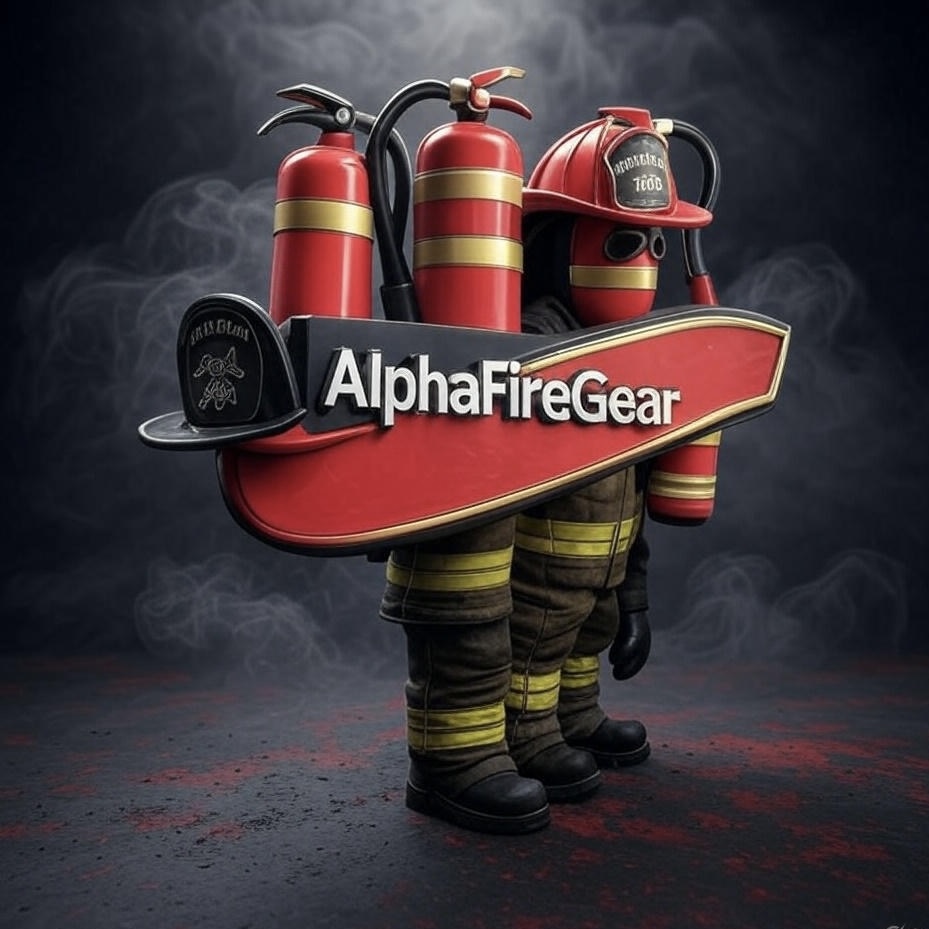










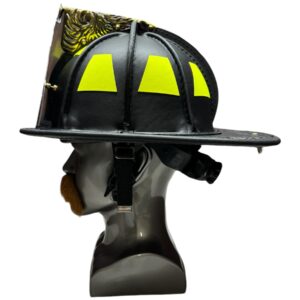
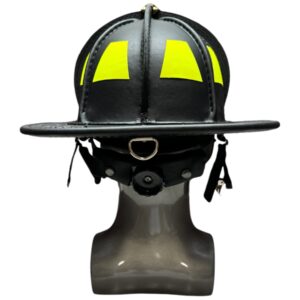



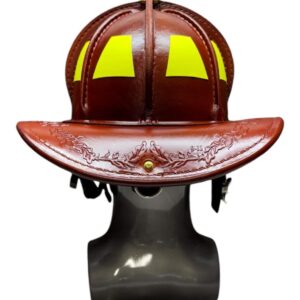
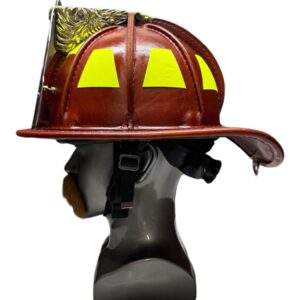


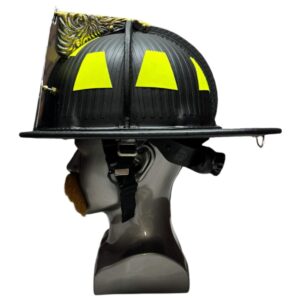
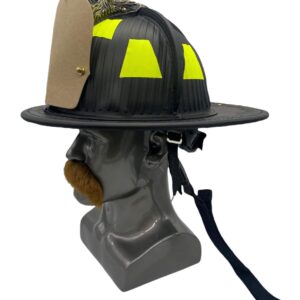
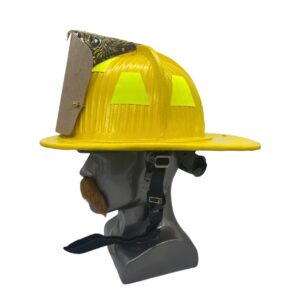
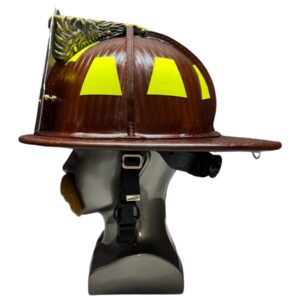
Reviews
There are no reviews yet.